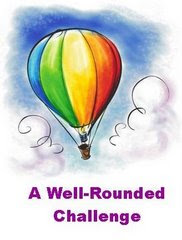 Summary of Bonfire:
Summary of Bonfire:On a clandestine date with his mistress one night, top Wall Street investment banker and snobbish WASP Sherman McCoy misses his turn on the thruway and gets lost in the South Bronx; his Mercedes hits and seriously injures a young black man. The incident is inflated by a manipulative black leader, a district attorney seeking reelection and a sleazy tabloid reporter into a full-blown scandal, a political football and a hokey morality play. Wolfe adroitly swings his focus from one to another of the people involved: the protagonist McCoy; Kramer, the assistant D.A.; two detectivesone Irish, the other Jewish; a slimy, alcoholic British journalist; an outraged judge, etc. He has an infallible, mocking ear for New York voices, rendering with equal precision the defense lawyer's "gedoutdahere," the deliberate bad grammar ("that don't help matters") of the wily "reverend" and the clenched-teeth WASP locution ('howjado"). His reporter's eye has seized every gritty detail of the criminal justice system, and he is also acute in rendering the hierarchy at a society party. He convincingly equates the jungles of Wall Street and the Bronx: in both places men casually use the same four-letter expletives and, no matter what their standing on the social ladder, find that power kindles their lust for nubile young women. Erupting from the first line with noise, color, tension and immediacy, this immensely entertaining novel accurately mirrors a system that has broken down: from the social code of basic good manners to the fair practices of the law.
 Summary of 740 Park:
Summary of 740 Park:Of all Manhattan's fabled East Side dwellings of the super-rich, 740 Park Avenue has perhaps the best pedigree. Designed by Rosario Candela and developed by James T. Lee, Jackie O's maternal grandfather, as a cooperative haven for the elite, it had the misfortune to open just as the stock market crashed in 1930 and was forced to operate partly as a rental for some decades. The last sale was to Lee himself, for son-in-law "Black Jack" Bouvier, his wife and daughters Jackie and Lee. John D. Rockefeller Jr. signed a rental lease in 1936 for a massive apartment (more than 20,000 square feet), and Marshall Field III took another. Gross has solidly researched the denizens of the building, who they were, what they did, and who and how many times they married.
My input:
I decided to review these two together because they complement each other so well. Bonfire is fiction, but as seen from 740 Park, it's descriptions of the New York rich and powerful are not far from the mark. In fact, in one section of 740 Park, the author indicates that the Sherman McCoy character from Bonfire was modeled on a real life tenant.
I found both books enjoyable, although I did tend to get a bit frustrated with the characters detailed in both -- they're all so rich, spoiled, and cut off from the world that most of us inhabit that it's hard to have much empathy for them when things go bad. I think I would have enjoyed Bonfire even more if I had read it closer to when it originally came out (the late 1980's), as much of the storyline has been told in various episodes of Law & Order and the like, so it ended up seeming boringly familiar in many parts. 740 Park was a much slower read, and contained so many different individuals that it was hard to keep up with them. I'm an architecture buff, so I enjoyed the physical descriptions of the building, but it did get old after a while to read such exhaustive detailing of the unbelievable amounts of money spent on the apartments. And at over 600 and 500 pages respectively, I'm ready for a few lighter reads.






















